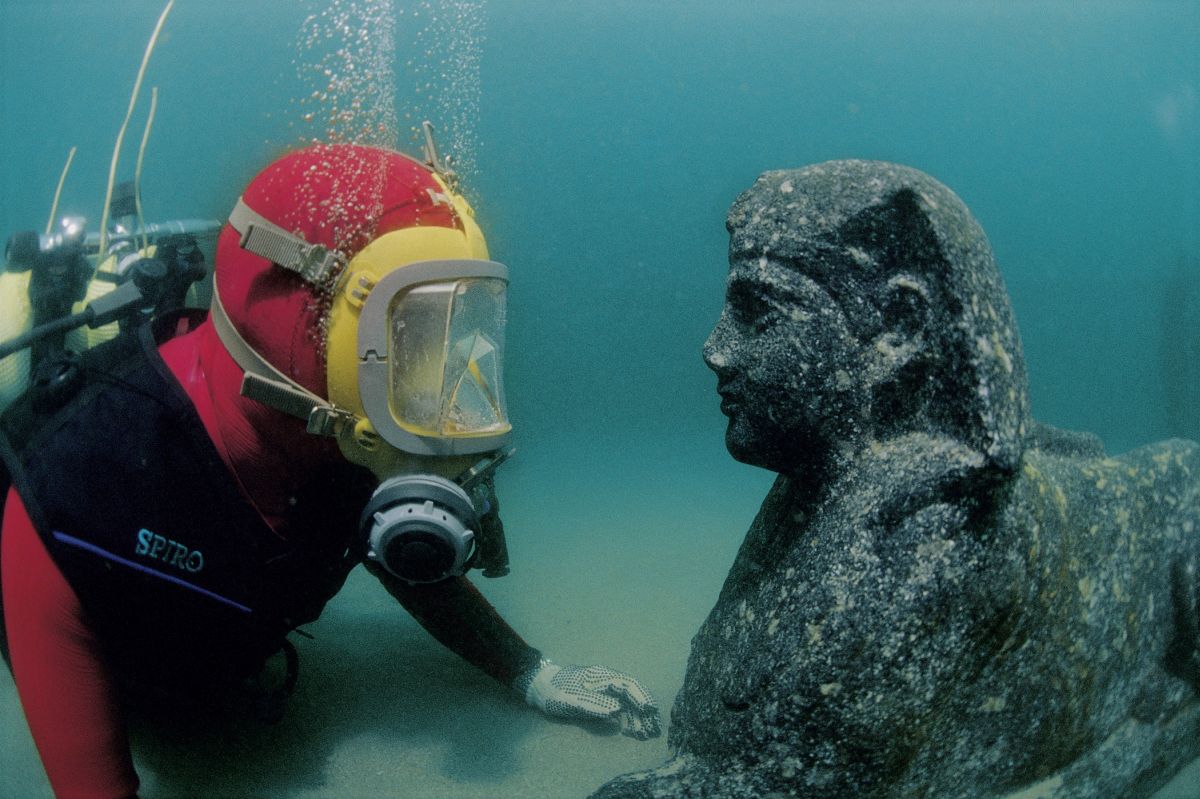
Film Screening: Swallowed by the Sea
“Swallowed by the Sea: Ancient Egypt’s Greatest Lost City.”
Get a behind-the-scenes look at the rediscovery of the lost city of Thonis-Heracleion, one of two ancient Egyptian cities featured in the exhibition. This film is produced by Scottish Television. (59 min., in English)
Free; tickets not required.
This film’s final screening is April 5th in the Pillsbury Auditorium on the second floor, every hour from 10:15 a.m.; last screening at 7:15 p.m.*
*Film screening availability subject to change.
Archeologist eye to eye to with a sphinx underwater. Granodiorite. H. 70, L 150 cm. 1st c. BC. National Museum, Alexandria (SCA 450) Alexandria Eastern Harbour. IEASM Excavation. The treatment of the face is characteristic of royal effigies blending the Pharaonic traditions with the Hellenistic portrait style. This Sphinx could be a portrait of the father of Cleopatra VII, the "great" Cleopatra, Ptolemy XII Auletes Neos Dionysos. Photo: Jérôme Delafosse © Franck Goddio/Hilti Foundation.
